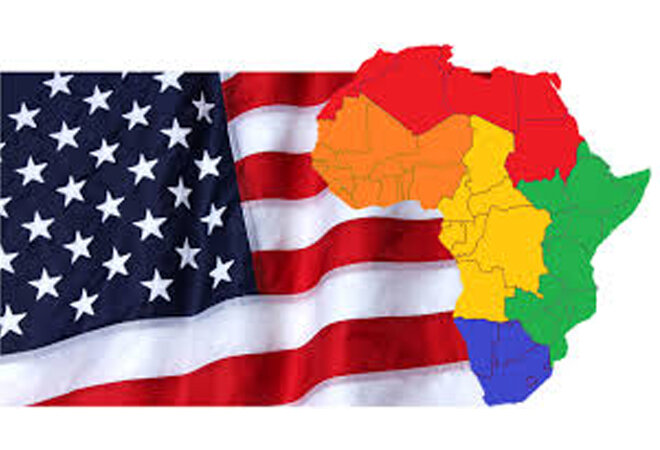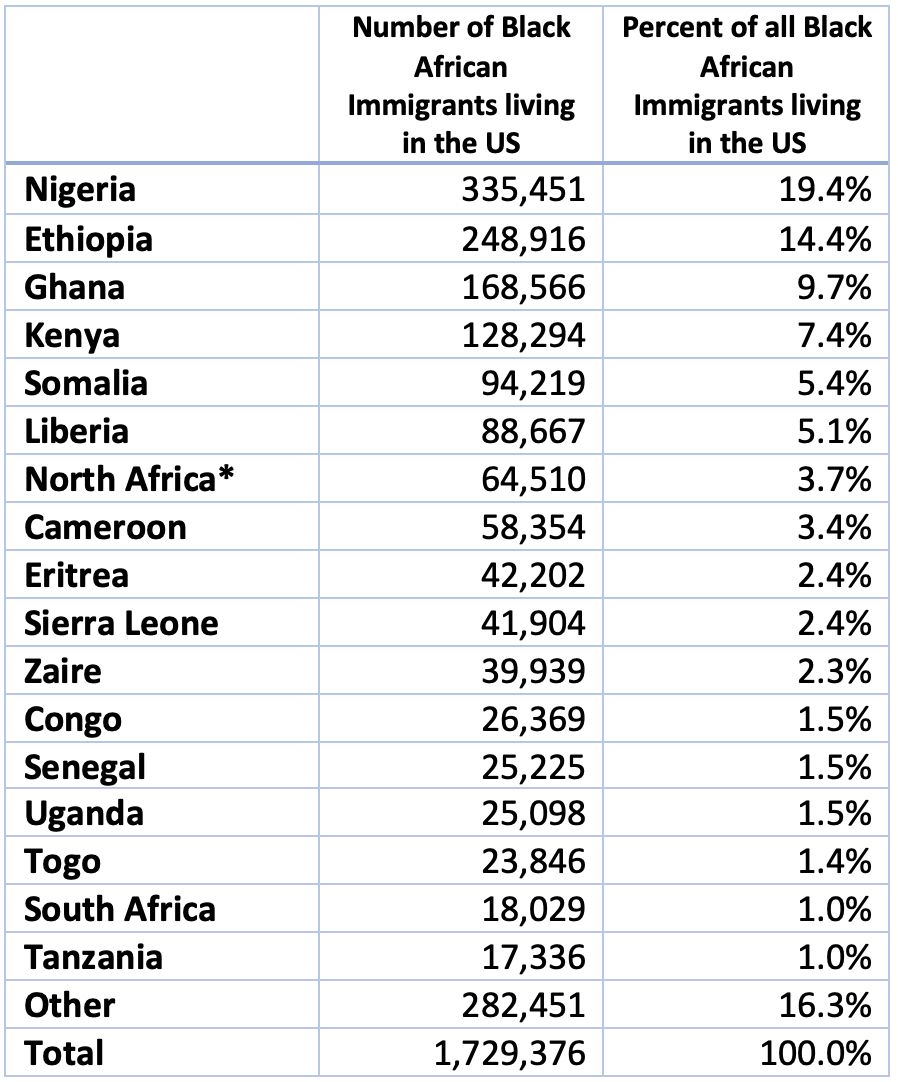by Valerie Lacarte, PhD
With the Trump administration in the rearview mirror, immigrants can take a breath. The frequent insults and erection of barriers to immigrants from Asia, Latin America, the Middle East and Africa, and from highly educated international students to destitute families arriving at the southern border, are well documented. Yet, some harmful policies against Black immigrants got less attention. Various reports indicate a disproportional rise in deportations of West African and Haitian immigrants, rejections of legitimate asylum cases and abusive enforcement practices by ICE.
Compared to his predecessors, President Trump dramatically cut the number of refugees admitted –many of which are Africans - making the country lose its top spot as recipient of refugees in the world. In 2016, the last year of the Obama administration, 97 thousand refugees were resettled compared to only 23 thousand in 2018. On its way out the door, the Trump administration launched a pilot program to discourage tourists and business people from overstaying their visas by requiring applicants from 23 countries –15 of which are in Africa - pay a bond of up to $15,000, a steep increase from the average visa cost of $160 to $300.
Moving forward, US policy towards African immigrants must be informed and proactive given global demographic trends. As a continent, Africa has the youngest population: the median age is 18 years old compared to 35 in North America and 42 in Europe. One model predicts that by the year 2100, half of kids 0-4 years old will live in Africa. The prospects for Africa’s economic growth may be mixed, but there’s no doubt that out-migration, including to the US, will continue.
The majority of Black African Immigrants living in the US come from Nigeria, Ethiopia, Ghana and Kenya. Africans are racially and ethnically diverse.
Over the last decade, Africans have been the fastest growing group of immigrants to the US. Based on data from the American Community Surveys (ACS), the number of immigrants from Africa who identify as Black totals 1,729,376, which represents 36% of all Black immigrants. The largest flows come from Nigeria, Ethiopia, Ghana and Kenya.
Table 1. Number of Black African Immigrants living in the US by Country of Birth, 2014-2018
Source: Author’s analysis of the 2014-2018 American Community Surveys. Note: All ages. All people who self-identify in the ACS as Black only or in combination with another race/ethnicity. North Africa includes: Algeria, Egypt, Libya, Morocco, Sudan and Tunisia.
For most Sub-Saharan African countries for which we have data, over 90% of their diaspora in the US are Black. But looking at all immigrants from continental Africa, close to a quarter are not Black. This group primarily comes from Arab/Muslim countries and from South Africa: only 7% of Libyans and Egyptians, 10% of Moroccans and 17% of South Africans living in the US identify as Black.
Black African identity is grounded in a rich ancestral system of ethnicities and tribes that was shattered by Europeans during colonization, and the subsequent decolonization that left Africa with nation-states and institutions designed by foreigners. Cultural, linguistic and religious differences combined with territorial disputes have fostered a climate ripe for ethnonational forces to take over political systems and manipulate civilians into violent conflicts. The Rwanda genocide is one tragic example.
A number of African countries strive to find power-sharing arrangements that satisfy their diverse populations. For example, while 98% of Ethiopian immigrants in the US self-identify as Black, there are over 80 ethnic groups in their home country, and the largest ones (Amhara, Omoro and Tigrayan) have been in a power struggle for decades. Combined with a nearly 30-year war with neighboring Eritrea – ended by President Abiy Ahmed for which he won the Nobel peace prize in 2019 - many have been displaced internally and abroad, resulting in thousands of refugees over the years, including to the US.
Black African Immigrants are dispersed across the US, a testament to their diverse channels of immigration.
Black African immigrants come to the US through various channels; they are more likely than other immigrants to come as refugees or through the diversity lottery program. They are fairly spread out across the United States, but the highest concentrations are in Texas, New York, Maryland, California, Minnesota, Virginia and Georgia.
Some notable communities include Nigerians, who have a particularly high share of educated professionals (doctors, lawyers, engineers) and a growing number of business owners. Kenyans - who will forever celebrate their US born descendant President Barack Obama – are heavily concentrated in Washington, DC. Also well-known are Somalis in Minneapolis, many of which came because of the 1990s civil war, and are now represented by Ms. Ilhan Omar in the US Congress, a trailblazer in many respects.
Figure 1. State of Residence of Black African Immigrants, 2014-2018
Source: Author’s analysis of the 2014-2018 American Community Surveys. Note: States identified with a blue dot on the map represent where 77% of all Black African immigrants live. Other states have less than 2% of the total Black African immigrant population.
A Significantly Higher Share of Black African Immigrants Have a University Degree Compared to African Americans.
The educational profiles of Black African immigrants and the US born Black are quite different. First, the percentage of African immigrants with university degrees is significantly higher. Close to 45% of Black African immigrant men hold at least a bachelor’s degree, equivalent to three times the share of African American men. The share of Black African immigrant women with university degrees is also higher than for African American women, though the difference is smaller (31% vs 23%).
Second, gender dynamics are opposite. African American women are more educated than their male counterparts; the reverse is true among Black African immigrants. The highest shares of people without a High School degree are Black African immigrant women (18%) and African American men (16%).
Figure 2. Highest Degree Obtained by Black African Immigrants and African Americans, by Gender, 2014-2018
Source: Author’s analysis of the 2014-2018 American Community Surveys. Note: Age 25 and older. Immigrants who came to the US as adults.
Black African Immigrants earn more and have lower unemployment rates than African Americans. Gender trends in unemployment are opposite between the two communities.
Looking at median annual earnings, Black African immigrant women and men earn 3 to 6% more than their African American counterparts. This represents a difference of about $2,000 a year. Despite being a relatively educated group, African American women earn the least of all.
Figure 3. Earnings of Black African Immigrant and African American Workers, by Gender, 2014-2018
Source: Author’s analysis of the 2014-2018 American Community Surveys. Note: Median earnings of people 16 and older who work at least 35 hours a week for 36 weeks per year. Immigrants who came to the US as adults.
The unemployment rate for African American men (11.7%) is more than double that of Black African immigrant men (5.2%). To a lesser extent, African American women’s unemployment rate is also higher than for Black African immigrant women (9.6% vs 7.8%). As in the case of education, gender dynamics within those communities are reversed. African American women have a lower unemployment rate than the men, but among Black African immigrants, it is the men who have a lower unemployment rate.
Figure 4. Unemployed Black African Immigrants and African Americans, by Gender, 2014-2018
Source: Author’s analysis of the 2014-2018 American Community Surveys. Note: 16 and older. Immigrants who came to the US as adults.
Black African Immigrants are less likely to live in poverty. They are also more likely to be married than African Americans.
About 18% of Black African immigrants and 21% of African Americans live below the federal poverty line. While the former are slightly better off, the number of poor Black people is disproportionally high compared to the national poverty rate of 11.8% (in 2018).
One important difference between these groups is the structure of their families. Marriage rates are much higher among Black African immigrants (59% vs 29%), and they are less likely to live in multigenerational households (unlike Black Caribbean and Latin American immigrants). This is probably due to African migration being more recent, and family-based immigration being less prevalent than for other immigrants.
Figure 5. Poverty and Family Structure of Black African Immigrants and African Americans, 2014-2018
Source: Author’s analysis of the 2014-2018 American Community Surveys. Note: Age 18 and older. Poverty thresholds are determined by federal guidelines using information on income, number of people living in the households and cost of living. Multigenerational households have at least 3 generations. Immigrants who came to the US as adults.
The median household income of Black African immigrants is close to $62,500 or 16% higher than in African American Households. This is driven in part by Black African immigrants’ higher share of couples, individual earnings, educational outcomes, and lower unemployment rates.
Figure 6. Median Household Income of Black African Immigrants and African Americans, 2014-2018
Source: Author’s analysis of the 2014-2018 American Community Surveys. Note: Includes income from all people living in the household. Immigrants who came to the US as adults.
Conclusion: Black African Immigrants highlight the diversity of Black experiences in America – not only in terms of culture but also in social outcomes.
Black African immigrants and their descendants play an important role in celebrating Black identity. They capture the world’s imagination from Nollywood – the powerhouse of African movies - to Hollywood, with celebrities like Danny Glover, Forest Whitaker, Lupita Nyongo, Chiwetel Ejiofor and Daniel Kaluuya, all who have starred in Afro-centric movies such as The Color Purple, 12 years a Slave, and Black Panther.
Social and economic achievements by Black African immigrants are to be celebrated, but they do not erase the reality of the overall Black experience in America. Their better educational and labor outcomes – relative to African Americans - are both encouraging for the broader immigrant story, and disconcerting for the future of the Black community as a whole. The fact that long-established African Americans are trailing behind in key socio-economic indicators deserves attention: Black immigrants are likely to run into the same obstacles, if not themselves, likely their children.
As we were reminded in the last years, in spite of individual achievements, Black people – US and foreign born – are frequent targets of discrimination. Even the high-achieving Nigerians were included in the infamous “Muslim ban.” Is it possible to build on the successes of some, while lifting the voices of the unheard majority? Recently acclaimed Issa Rae shows that a good recipe is to mix creativity with consciousness. Through her work, this young actress-producer of Senegalese-descendant regularly uses her platform to address racial injustice, all while showcasing a beautiful, diverse, yet cohesive and promising Black America.
Data, Methodology and Definitions: Dr. Lacarte conducted analysis using microdata from the American Community Survey 2014-2018 5-year sample by IPMUS (publicly available for download). At the exception of Table 1 and Figure 1, all data refers to immigrants who came to the US as adults. The definition of Black includes anyone who self-identified as Black - alone, or in combination with another race, in the 2014-2018 ACS.
About the author: Dr. Valerie Lacarte received her PhD in economics from American University, Washington, DC. She has expertise in quantitative and qualitative research, international development, labor, immigration and the intersectionality of gender and race/ethnicity. Image by @celeaguevara
For questions on the data analysis or for references, contact info@sudecc.com
Related blogs









